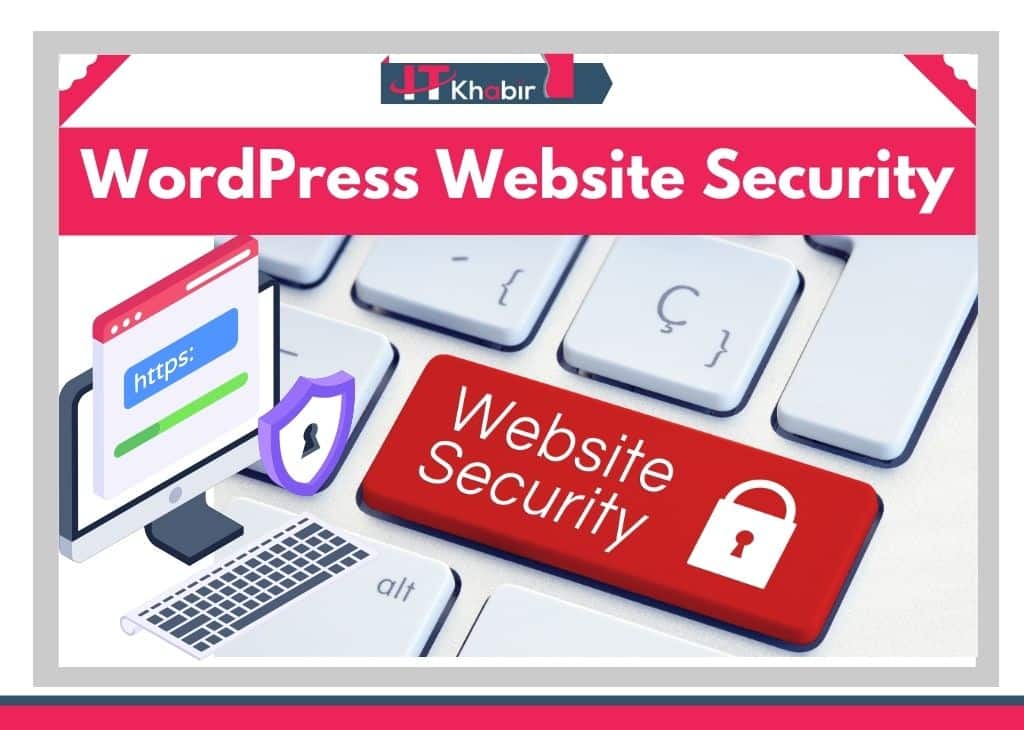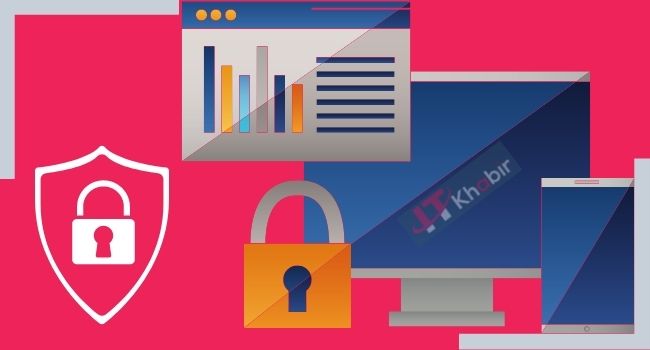This guide will show you how to secure your WordPress site. WordPress is a content management system (CMS) that powers millions of websites. It is a popular target for hackers because it is open-source and easy to use.
There are many ways to secure a WordPress site. This guide will cover the basics of securing your WordPress site. We will cover topics such as choosing a strong password, keeping your WordPress version up to date, and using a security plugin.
☛ Why You Need WordPress Security?
As a WordPress user, you may be wondering why you need WordPress security. After all, WordPress is a secure platform, right? Wrong. WordPress is a secure platform, but that doesn’t mean that your WordPress site is secure. There are a number of ways that your WordPress site can be hacked, and if you’re not careful, you could find yourself the victim of a serious security breach.
The good news is that there are a number of ways to secure your WordPress site. In this article, we’ll take a look at why WordPress security is important and how you can go about securing your WordPress site.
- Gets touch details click here How to Secure Your WordPress Site
☛ Why WordPress Security Is Important?
As we mentioned above, WordPress is a secure platform. However, that doesn’t mean that your WordPress site is automatically secure. WordPress sites are often hacked because hackers know that WordPress is a popular platform and that many WordPress sites are not properly secured.
If your WordPress site is hacked, the consequences can be serious. Your site could be defaced, your data could be stolen, and you could be left with a huge mess to clean up. In short, it’s not worth taking the risk of not securing your WordPress site.
How to Secure Your WordPress Site
There are a number of ways to secure your WordPress site. Below, we’ll share some of the best ways to secure your WordPress site.
Choose a Secure WordPress Host
One of the best ways to secure your WordPress site is to choose a secure WordPress host. A secure WordPress host will take steps to secure your WordPress site, such as installing the latest security updates and providing a secure environment for your site.
If you’re not sure which WordPress host to choose, we recommend checking out our article on the best WordPress hosts.
- Gets touch details click here How to Secure Your WordPress Site
☛ Install a WordPress Security Plugin
Another great way to secure your WordPress site is to install a WordPress security plugin. WordPress security plugins offer a variety of features that can help to secure your WordPress site, such as malware scanning, firewalls, and intrusion detection.
There are a number of great WordPress security plugins available, so take some time to research the options and choose the plugin that’s right for you.
☛ Why Need WordPress Use Strong Passwords?
One of the most important things you can do to secure your WordPress site is to use strong passwords. A strong password is a password that is difficult to guess or crack. It should be at least 8 characters long and should include a mix of uppercase and lowercase letters, numbers, and symbols.
There are a few reasons why you should use strong passwords:
- To prevent brute force attacks
A brute force attack is a type of attack where a hacker tries to guess your password by trying out different combinations of characters. If you have a strong password, it will be much harder for a hacker to guess it.
2. To prevent dictionary attacks
A dictionary attack is a type of attack where a hacker tries to guess your password by using a list of words (usually words that are found in a dictionary). If you have a strong password that is not a word, it will be much harder for a hacker to guess it.
3. To prevent social engineering attacks
Social engineering is a type of attack where a hacker tries to trick you into giving them your password. For example, they may send you an email that looks like it’s from WordPress and asks you to enter your password. If you have a strong password, it will be much harder for a hacker to guess it.
4. To prevent password reuse
If you use the same password on multiple websites, a hacker who gets your password for one website will be able to access your other accounts as well. This is why it’s important to use a different password for each website. If you have a strong password, it will be much harder for a hacker to guess it.
5. To prevent phishing attacks
A phishing attack is a type of attack where a hacker tries to trick you into giving them your password. For example, they may send you an email that looks like it’s from WordPress and asks you to enter your password. If you have a strong password, it will be much harder for a hacker to guess it.
Using a strong password is one of the best things you can do to secure your WordPress site. If you’re not sure how to choose a strong password, there are a few things you can do:
1. Use a password manager
A password manager is a program that helps you generate and store strong passwords. We recommend using LastPass or 1Password.
2. Use a passphrase
A passphrase is a series of words that you can use as a password. For example, you could use the phrase “I love cats” as a password. This is much easier to remember than a random string of characters, and it’s also more secure.
3. Use a combination of letters, numbers, and symbols
If you use a mix of letters, numbers, and symbols in your password, it will be much harder for a hacker to guess it. For example, you could use the password “w3!rDp4ssw0rd”.
4. Use a long password
The longer your password is, the harder it will be for a hacker to guess it. We recommend using a password that is at least 8 characters long.
5. Use a different password for each website
If you use the same password on multiple websites, a hacker who gets your password for one website will be able to access your other accounts as well. This is why it’s important to use a different password for each website.
Following these tips will help you choose a strong password that is difficult for a hacker to guess.
- Gets touch details click here How to Secure Your WordPress Site
☛ Keep Your WordPress Site Up to Date
One of the most important things you can do to secure your WordPress site is to keep it up to date. WordPress releases new versions of the WordPress software regularly, and each new version includes security fixes.
So, make sure to keep your WordPress site up to date by installing the latest WordPress updates as soon as they’re available.
☛ How safe is WordPress?
Despite its reputation as a secure and reliable platform, WordPress is not without its vulnerabilities. While the vast majority of WordPress sites are never hacked, it is important to be aware of the potential risks and take steps to protect your site.
The most common type of attack on WordPress sites is brute force attacks, where hackers try to guess your username and password. These can be prevented by using a strong password and a plugin like Wordfence to limit login attempts.
Other common attacks include SQL injection, where hackers inject malicious code into your database, and cross-site scripting (XSS), where hackers inject malicious code into your site that is then executed by visitors. These can be prevented by keeping your WordPress installation up to date and using a plugin like Sucuri to scan for malware.
While WordPress is a secure platform, it is important to take steps to protect your site. By following the tips above, you can help ensure that your WordPress site is safe from attack.
Here are a few things you can do to keep your WordPress site safe and secure:
1. Keep WordPress and all plugins and themes up to date.
2. Use a strong password and never reuse passwords.
3. Use a security plugin like Wordfence to scan for malware and vulnerabilities.
4. Don’t install plugins or themes from untrustworthy sources.
5. Host your WordPress site on a secure server.
By following these simple security measures, you can keep your WordPress site safe from most security threats. WordPress is a very secure platform, but it’s not immune to all security risks. Taking some basic precautions is the best way to protect your site.
- Gets touch details click here How to Secure Your WordPress Site
☛ Use secure WordPress Hosting.
If you’re serious about your website, then you need to be using secure WordPress hosting. Not only will this help to keep your site safe and secure, but it will also give you the peace of mind that comes with knowing your site is in good hands.
There are a number of things to look for when choosing a secure WordPress host, but the most important thing is to make sure they offer SSL certificates. These are what encrypt your connection to the server, so that no one can eavesdrop on your data.
Another important thing to look for is a host that provides daily backups. This way, if anything ever happens to your site, you can rest assured that you have a recent backup to restore from.
Finally, you’ll want to choose a host that has excellent customer support. This way, if you ever have any questions or concerns, you can be sure that someone will be there to help you out.
Secure WordPress hosting is an important investment for any website, and it’s worth taking the time to find the right host for you. With the peace of mind that comes with knowing your site is safe and secure, you’ll be able to focus on what’s really important – running your business.
- Gets touch details click here How to Secure Your WordPress Site
Most Popular Free Domain Hosting Company
☛ How to Choose a Secure WordPress Hosting Provider
When choosing a WordPress hosting provider, it’s important to choose a provider that offers secure hosting. Here are some things to look for when choosing a WordPress hosting provider:
1. A Secure Hosting Environment
When choosing a WordPress hosting provider, make sure that the provider offers a secure hosting environment. The provider should have a firewall in place to protect your website from attacks.
2. Malware Scanning and Removal
Make sure that the WordPress hosting provider offers malware scanning and removal. Malware is a type of software that can harm your website. If your website is infected with malware, it can be defaced, your data can be stolen, and your website can be used to spread malware.
3. Secure Sockets Layer (SSL)
Make sure that the WordPress hosting provider offers SSL. SSL is a security protocol that encrypts data between your website and your visitors. SSL is important because it protects your website from eavesdroppers and man-in-the-middle attacks.
4. Two-Factor Authentication
Make sure that the WordPress hosting provider offers two-factor authentication. Two-factor authentication is an additional layer of security that requires two pieces of evidence to log in to your website.
5. Regular Backups
Make sure that the WordPress hosting provider offers regular backups. Backups are important because they allow you to restore your website if it is hacked.
6. 24/7 Support
Make sure that the WordPress hosting provider offers 24/7 support. Support is important because it allows you to get help if your website is hacked.
7. A Money-Back Guarantee
Make sure that the WordPress hosting provider offers a money-back guarantee. A money-back guarantee is important because it allows you to get your money back if you’re not satisfied with the service.
8. A Free Trial
Make sure that the WordPress hosting provider offers a free trial. A free trial is important because it allows you to test the service before you commit to it.
9. A Discount for WordPress.com Users
Make sure that the WordPress hosting provider offers a discount for WordPress.com users. WordPress.com is a popular website builder that is owned by WordPress. If you’re a WordPress.com user, you can get a discount on your WordPress hosting.
10. A Discount for WordPress.org Users
Make sure that the WordPress hosting provider offers a discount for WordPress.org users. WordPress.org is the home of the WordPress software. If you’re a WordPress.org user, you can get a discount on your WordPress hosting.
Tips for Securing Your WordPress Website
In addition to choosing a secure WordPress hosting provider, there are a few things you can do to secure your WordPress website. Here are some tips for securing your WordPress website:
1. Use a strong password.
2. Use a security plugin.
3. Keep your WordPress software up to date.
4. Don’t use nulled or pirated themes or plugins.
5. Use a web application firewall.
6. Don’t give away too much information in your website’s footer.
7. Limit login attempts.
8. Use two-factor authentication.
9. Protect your wp-config.php file.
10. Keep a backup of your website.
Most Popular Free Domain Hosting Company
- Gets touch details click here How to Secure Your WordPress Site
☛ What To Do If You’re WordPress Website Hacked?
If you’re a WordPress user, it’s important to know what to do if your website is hacked. Here are some tips:
1. Immediately change your password. If you use the same password for other accounts, change those too.
2. Check for any unusual activity in your WordPress admin area. If you see any posts or comments that you didn’t add, delete them immediately.
3. Download a fresh copy of WordPress from WordPress.org and replace all of your WordPress files. This will ensure that any malicious code that was added to your site is removed.
4. If you have a backup of your site, restore it from that. If you don’t have a backup, you can try to use a WordPress security plugin to help you remove the malicious code.
5. Contact your hosting provider and let them know that your site has been hacked. They may be able to help you clean up the mess and secure your site.
Following these steps should help you get your WordPress site back up and running after it’s been hacked.
- Gets touch details click here How to Secure Your WordPress Site
☛ WordPress website Limit Login Attempts
As anyone who’s ever had their WordPress site hacked can attest, it’s a very unpleasant experience. Not only can it be costly to clean up the mess and restore your site, but it can also be a huge headache.
One of the best ways to prevent your WordPress site from being hacked is to limit the number of login attempts that can be made. By doing so, you make it much harder for hackers to brute force their way into your site.
In this article, we’ll show you how to easily limit login attempts in WordPress.
Why Limit Login Attempts in WordPress?
There are two main reasons why you would want to limit login attempts in WordPress.
The first reason is to prevent brute force attacks. A brute force attack is when a hacker tries to guess your username and password by making thousands of attempts.
If you have a strong password, then it’s unlikely that a hacker will be able to guess it. However, if you have a weak password, then it’s only a matter of time before they’re able to crack it.
The second reason to limit login attempts is to prevent denial of service attacks. A denial of service attack is when a hacker tries to overload your server by making too many requests.
If they make enough requests, then your server will eventually crash. This can take your entire website offline.
How to Limit Login Attempts in WordPress
There are two ways that you can limit login attempts in WordPress. The first way is to use a plugin, and the second way is to edit your theme’s functions.php file.
We’ll show you both methods.
Method 1: Using a Plugin
The first method is the easiest because it doesn’t require you to edit any code. All you need to do is install and activate the Limit Login Attempts Reloaded plugin. For more details, see our step by step guide on how to install a WordPress plugin.
Once the plugin is activated, you need to go to Settings » Limit Login Attempts to configure the plugin settings.
First, you need to decide how many login attempts should be allowed before the user is locked out. The default setting is to allow 5 attempts, but you can change it to anything you want.
Next, you need to decide how long the user should be locked out for. The default setting is 60 minutes, but you can change it to anything you want.
If you want, you can also enter your email address in the ‘Lockout notification email’ field. This way, the plugin will notify you whenever someone is locked out.
Once you’re done, don’t forget to click on the ‘Save Changes’ button to store your settings.
Method 2: Editing Your Theme’s Functions.php File
If you’re not comfortable using a plugin, then you can also limit login attempts by editing your theme’s functions.php file.
First, you need to connect to your WordPress site using an FTP client. Once you’re connected, you need to go to your theme’s folder. In most cases, it will be in /wp-content/themes/.
Once you’re in your theme’s folder, you need to locate the functions.php file and download it to your computer.
Next, you need to open the functions.php file in a text editor and add the following code at the bottom:
function limit_login_attempts() {
if ( !is_user_logged_in() ) {
if ( isset($_COOKIE[‘LoginAttempts’]) ) {
$login_attempts = $_COOKIE[‘LoginAttempts’];
if ( $login_attempts >= 3 ) {
die(‘You have exceeded the maximum number of login attempts. Please try again later.’);
}
}
}
}
add_action( ‘init’, ‘limit_login_attempts’ );
Once you’ve added the code, you need to save your changes and upload the file back to your server.
We hope this article helped you learn how to easily limit login attempts in WordPress. You may also want to check out our ultimate WordPress security guide for beginners.
- Gets touch details click here How to Secure Your WordPress Site
☛ Automatically log out Users
We all know how frustrating it is when we’re in the middle of reading an article or writing a comment on a WordPress site and we get automatically logged out. It’s even more annoying when we have to log back in and lose our place.
Wouldn’t it be great if there was a way to automatically log out users after a certain period of inactivity? Well, there is!
With a few simple lines of code, you can add a function to your WordPress site that will automatically log out users after a set period of time.
Here’s how to do it:
1. Log in to your WordPress site and go to the Dashboard.
2. In the Dashboard, go to Appearance > Editor.
3. On the Editor page, select the functions.php file from the list of files on the right.
4. Add the following code to the functions.php file:
function wp_auto_logout() {
if ( !is_user_logged_in() ) {
return;
}
if ( isset( $_GET[‘action’] ) && $_GET[‘action’] == ‘logout’ ) {
return;
}
$inactive = get_option( ‘wp_auto_logout_inactive’, 600 );
$current_time = time();
$user_last_activity = get_user_meta( get_current_user_id(), ‘wp_last_activity’, true );
if ( $user_last_activity ) {
$time_since_last_activity = $current_time – $user_last_activity;
if ( $time_since_last_activity > $inactive ) {
wp_clear_auth_cookie();
wp_logout();
$redirect_to = !empty( $_SERVER[‘HTTP_REFERER’] ) ? $_SERVER[‘HTTP_REFERER’] : home_url();
wp_safe_redirect( $redirect_to );
exit;
}
}
update_user_meta( get_current_user_id(), ‘wp_last_activity’, $current_time );
}
add_action( ‘init’, ‘wp_auto_logout’ );
5. Save the functions.php file.
Now, when a user is inactive for the amount of time you’ve specified in the code (in this example, it’s 10 minutes), they will be automatically logged out and redirected to the home page.
If you want to change the amount of time before a user is automatically logged out, simply change the value of the $inactive variable in the code. For example, to change it to 5 minutes, you would change the code to this:
$inactive = get_option( ‘wp_auto_logout_inactive’, 300 );
You can also add this code to your site via a plugin. There are a few plugins available that will do this for you, but we recommend the Simple Auto Logout plugin. It’s a lightweight plugin that doesn’t have any bloat or extra features, and it does exactly what it’s supposed to do.
We hope this code snippet has been helpful. Remember, if you’re not a developer or comfortable with code, we recommend using a plugin instead.
- Gets touch details click here How to Secure Your WordPress Site
How to Secure Your WordPress Site Final Thought
As a WordPress user, you need to take WordPress security seriously. WordPress is a secure platform, but that doesn’t mean that your WordPress site is automatically secure. There are a number of ways that your WordPress site can be hacked, and if you’re not careful, you could find yourself the victim of a serious security breach.
The good news is that there are a number of ways to secure your WordPress site. In this article, we’ve shared why WordPress security is important and how you can go about securing your WordPress site.



















